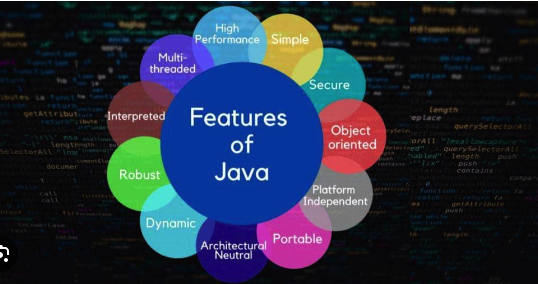Java has been around for decades, yet it still holds a strong position as one of the most widely used programming languages out there. Even with newer languages like Python, JavaScript, and Kotlin gaining traction, Java remains a go-to choice, particularly in large-scale enterprise settings. So, what’s the secret behind Java’s staying power?
In this blog, we’re going to dive into the features that make Java stand out from the crowd and see how it stacks up against other popular languages. Whether you’re figuring out which language to dive into next or just curious about what keeps Java in the game, this comparison will help you understand why Java continues to be a favorite among developers.
Section 1: Overview of Java’s Core Features
1.1 Platform Independence with Java Virtual Machine (JVM)
One of the most significant Java features is its platform independence, achieved through the Java Virtual Machine (JVM). The JVM allows Java programs to run on any device or operating system that has a compatible runtime environment. This “write once, run anywhere” capability is a major reason for Java’s widespread adoption across different industries.
Comparison:
Languages like C and C++ are typically compiled to platform-specific binaries, meaning the code needs to be recompiled for each target platform. In contrast, Java’s JVM handles this portability, making Java a more versatile choice for cross-platform development.
1.2 Strong Memory Management and Garbage Collection
Java provides automatic memory management through its garbage collection system, which automatically deallocates memory that is no longer in use. This feature reduces the likelihood of memory leaks and other memory-related issues, which are common challenges in languages like C++ that require manual memory management.
Comparison:
While Python also offers garbage collection, its memory management features are generally considered less robust than Java’s. Python’s Global Interpreter Lock (GIL) can lead to performance bottlenecks in multithreaded applications, whereas Java’s memory management is more efficient in handling such scenarios.
1.3 Object-Oriented Programming (OOP) Principles
Java is built on a strong foundation of Object-Oriented Programming (OOP) principles, including encapsulation, inheritance, polymorphism, and abstraction. These principles allow developers to create modular, reusable code that is easy to maintain and extend.
Comparison:
Python also supports OOP, but it is more flexible, allowing developers to mix OOP with other programming paradigms like procedural and functional programming. While this flexibility is one of the features of Python that developers love, Java’s strict adherence to OOP principles often leads to more structured and scalable codebases.
Section 2: Java vs. Other Programming Languages
2.1 Java vs. Python
Syntax Simplicity and Readability:
Python is known for its simple and readable syntax, which makes it an excellent choice for beginners. Python’s use of indentation to define code blocks eliminates the need for curly braces and makes the code more visually appealing.
Java Feature:
Java’s syntax, while more verbose, is highly structured and consistent. This verbosity can lead to more explicit and self-documenting code, which is beneficial in large-scale applications.
Execution Speed and Performance:
Java is generally faster than Python due to its compiled nature. Java code is compiled into bytecode, which is executed by the JVM. Python, on the other hand, is interpreted at runtime, which can result in slower execution.
Libraries and Frameworks:
Both languages boast extensive libraries and frameworks. Java’s Spring framework is a powerhouse for building enterprise-level applications, while Python’s Django is favored for rapid development of web applications.
2.2 Java vs. C++
Language Complexity and Ease of Use:
C++ offers more control over system resources, making it ideal for system-level programming. However, this control comes at the cost of complexity. C++ requires manual memory management, which can lead to bugs and memory leaks.
Java Feature:
Java abstracts many of these low-level operations, allowing developers to focus on business logic rather than system-level details. This makes Java easier to learn and use, especially for large application development.
Performance Considerations:
C++ is known for its high performance, as it is closer to machine language. However, Java’s Just-In-Time (JIT) compiler and optimizations in the JVM have significantly narrowed the performance gap, making Java a viable option even for performance-critical applications.
2.3 Java vs. JavaScript
Use Cases:
Java and JavaScript are often confused due to their similar names, but they serve very different purposes. Java is primarily used for server-side applications, while JavaScript is the language of the web, running on the client side.
Language Design:
Java is statically typed, meaning variable types are declared at compile-time. This leads to fewer runtime errors and more predictable behavior. JavaScript, being dynamically typed, allows variables to change types at runtime, offering more flexibility but also potentially leading to more bugs.
Java Feature:
Java’s static typing and strong type-checking system are often seen as advantages in large-scale, enterprise-level applications, where predictability and stability are crucial.
2.4 Java vs. C#
Syntax and Structure:
C# was heavily influenced by Java, and the two languages share many similarities in syntax and structure. Both are object-oriented and run on virtual machines (JVM for Java and CLR for C#).
Platform Dependence:
Java’s cross-platform capabilities are one of its most significant advantages, allowing applications to run on any operating system with a JVM. C#, traditionally tied to the Windows platform through .NET, has become more cross-platform with the advent of .NET Core, but Java’s WORA (Write Once, Run Anywhere) philosophy remains more deeply ingrained.
Community and Ecosystem:
Java benefits from a large and active developer community, along with a rich ecosystem of libraries, frameworks, and tools. While C# has strong support within the Microsoft ecosystem, Java’s broader platform reach makes it a more versatile choice for many developers.
Section 3: Unique Java Features That Set It Apart
3.1 Robust Standard Library
Java’s standard library is extensive and covers everything from data structures and algorithms to networking and file I/O. This means that Java developers have a rich set of tools at their disposal without needing to rely on third-party libraries.
Comparison:
The features of Python include a similarly extensive standard library, but Java’s library is often considered more robust for enterprise-level development, offering more mature and stable solutions for large-scale applications.
3.2 WORA (Write Once, Run Anywhere)
Java’s WORA philosophy is one of its most defining characteristics. The ability to write code that runs on any platform with a JVM has made Java the go-to language for cross-platform development, particularly in enterprise environments.
Comparison:
While other languages like Python are also cross-platform, they don’t emphasize this capability as strongly as Java does. Java’s consistent cross-platform behavior is a significant advantage for developers working in diverse environments.
3.3 Multithreading and Concurrency
Java has built-in support for multithreading, which allows multiple threads to run concurrently. This is crucial for developing high-performance applications that can handle multiple tasks simultaneously.
Comparison:
While Python supports multithreading, its Global Interpreter Lock (GIL) can be a limiting factor in certain scenarios. Java’s concurrency features are more advanced and better suited for applications that require high levels of parallelism.
3.4 Security Features
Java has a strong security model, including features like bytecode verification, sandboxing, and cryptographic algorithms built into the standard library. This makes Java a preferred choice for developing secure applications.
Comparison:
Languages like Python and C++ offer security features, but Java’s built-in security mechanisms are more comprehensive and easier to implement, especially in enterprise environments where security is paramount.
Section 4: Java Ecosystem and Tooling
4.1 Integrated Development Environments (IDEs)
Java developers have access to some of the most powerful IDEs, including IntelliJ IDEA, Eclipse, and NetBeans. These IDEs offer advanced features like code completion, refactoring, debugging, and integrated build tools, making development more efficient.
Comparison:
While other languages like Python and JavaScript also have strong IDE support (e.g., PyCharm for Python, Visual Studio Code for JavaScript), Java’s IDEs are particularly well-suited for managing large, complex projects due to their robust feature sets.
4.2 Frameworks and Libraries
Java’s ecosystem includes a wide range of frameworks and libraries that support various development needs. The Spring framework, for example, is a powerful tool for building enterprise-level applications, offering features like dependency injection, aspect-oriented programming, and integrated security. bookies that accept bitcoin
Comparison:
While Python has frameworks like Django and Flask for web development, and JavaScript has Node.js, Java’s frameworks are often seen as more mature and feature-rich, particularly for enterprise-level applications.
4.3 Community and Support
Java has one of the largest and most active developer communities in the world. This community contributes to a vast array of open-source projects, libraries, and tools, making it easier for developers to find solutions to problems and stay updated with the latest developments.
Comparison:
Python also has a strong community, especially in areas like data science and machine learning, but Java’s community is broader and spans across more industries, providing extensive support for a wide range of development needs.




